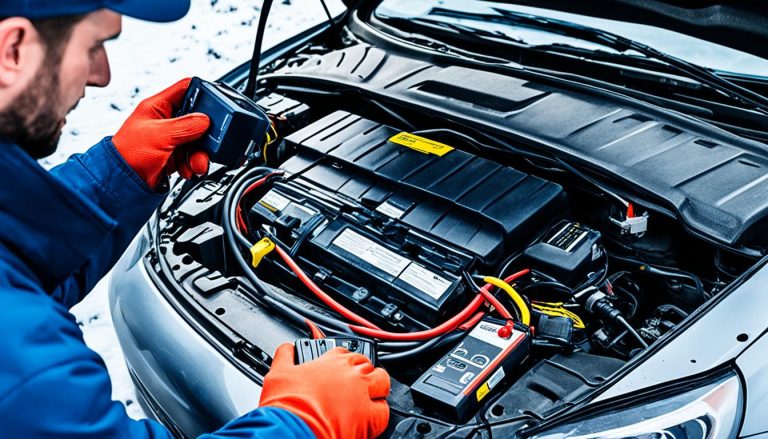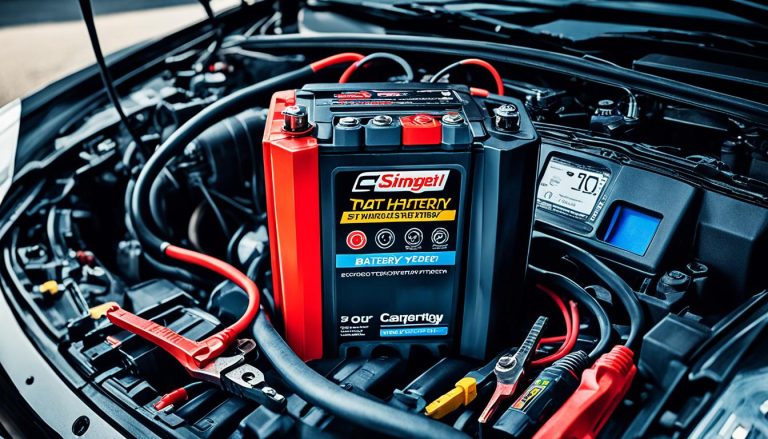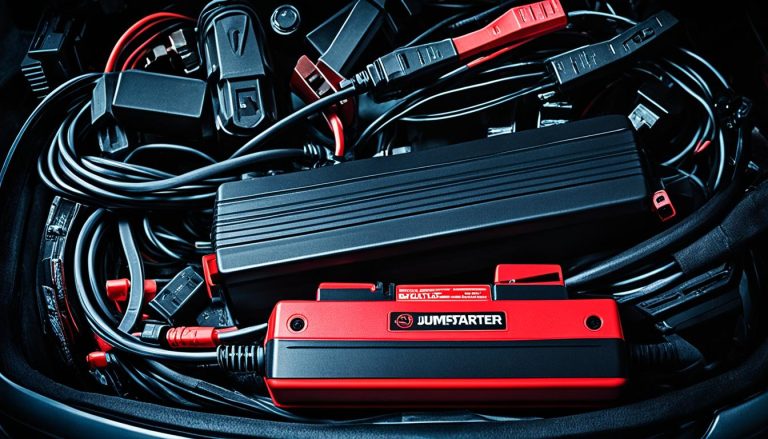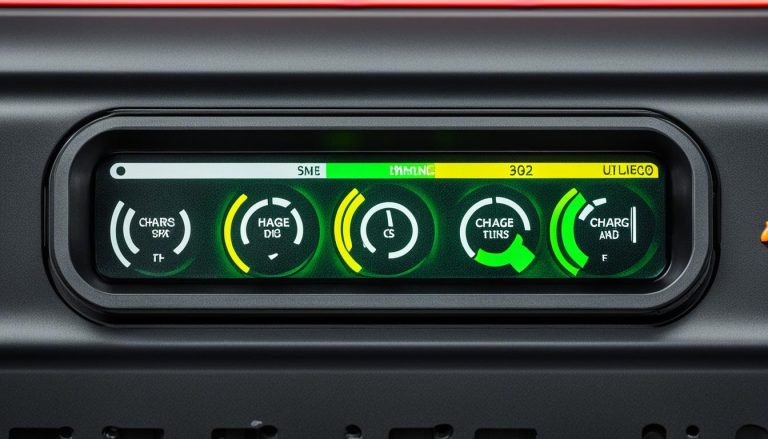BMW Battery Jump Start Guide – Quick & Easy
batterychargers.site and its partners may earn a commission if you purchase a product through one of our links
If you’re experiencing the all-too-common scenario of a BMW dead battery jump start situation, don’t fret – you’re in the right place to learn how to jump start bmw battery quickly and safely. A dead battery can happen to anyone, but with your BMW, there are specific procedures to follow to ensure you don’t damage your car’s advanced electrical system. Unlike other vehicles, your BMW actually prefers to be jump-started from the engine bay’s jump terminals, rather than directly from the battery.
Not to worry – we’re here to guide you through the process with confidence. From unlocking your door with the hidden metal blade in your key fob to finding those sneaky engine bay terminals, we’ve got the step-by-step details covered. Even if the battery’s located in your trunk, we’ll show you precisely how and where to connect those jumper cables for a seamless and safe boost, getting you back on the road in no time.
Key Takeaways
- Using the engine bay jump terminals is essential to prevent damage to your BMW’s electrical system during a jump start.
- Properly connect red to positive and black to a grounded metal component – never the negative battery terminal.
- Always carry a set of jumper cables and a 12V jump starter in your BMW to be prepared for dead battery situations.
- Following the correct jump start procedure can protect your vehicle and ensure a quick return to driving.
- If the battery is frequently dying, it’s crucial to seek professional diagnostics to address underlying issues.
Understanding the Basics of a BMW Battery Jump Start
When you’re faced with a BMW that won’t start, it’s often due to a drained battery. But don’t worry, jump starting your BMW is a straightforward process that can save the day. Understanding how it’s done is key to getting your vehicle running quickly and safely.
Why jump-start through the engine bay? Your BMW’s sophisticated engineering designates specific points in the engine bay for jump starts, bypassing the battery itself. This helps protect your car’s intricate electrical system from potential damage, which can be costly to repair.
The best battery for BMW not only offers reliability but compatibility with your vehicle’s technological demands. Ensure that the secondary source—be it another battery or jump box—matches this level of quality to maintain system integrity during a jump start.
Selecting the right bmw jumper cables is essential. They must be capable of handling the power needs of your BMW without causing electrical issues. Using subpar cables can lead to insufficient charging or, worse, a surge that might damage your vehicle’s electrical components.
Indicators of a Dead Battery:
- The car won’t start, only clicks.
- Unable to unlock the car using the fob.
- Lights are dim or not working.
- Dashboard warning lights flash on.
Ignoring these telltale signs can lead to repeated battery drain, possibly signaling deeper problems, such as corroded connections or an aged battery. Should these issues arise, a diagnostic evaluation by a professional may be required.
| Issue | Potential Cause | Professional Diagnostic Needed |
|---|---|---|
| Car won’t start | Dead battery, bad starter, or alternator | Yes, to determine exact cause |
| Dim lights | Weak battery or electrical faults | Potential charging system test |
| Slow engine cranks | Declining battery health | Battery test to assess life expectancy |
| Dashboard warning lights | Various including battery or alternator issues | Yes, to decode warning signals |
If you’ve determined a jump start is in order, remember: safety first. Ensure your BMW and the assisting vehicle are both off before connecting bmw jumper cables. Once cables are securely attached and the assisting vehicle is running, you can attempt a bmw car battery jump start with greater confidence.
Dealing with car battery problems can be daunting, but with a careful approach and the correct information, you can tackle the challenge. Keep an eye out for symptoms of battery failure, choose the best battery for BMW when necessary, and always handle jumper cables with care.
Preparation Steps Before Jump Starting Your BMW
Embarking on the task of jump starting your BMW can feel daunting, but taking the right preparatory steps ensures the process is safe and efficient. Here’s how to get set up before providing your BMW with the much-needed power revival.
Locating Your BMW’s Battery and Jump Start Terminals
First and foremost, your BMW’s battery may be playing hide-and-seek, often situated in the trunk for weight distribution purposes. Consequently, the engine bay houses the jump start terminals, usually under a conspicuous red plastic cap stamped with a positive (+) sign. To avoid any confusion or damage to your car’s complex electronics, always consult your BMW’s owner manual or lean on the expertise of a trusted bmw battery jump start service to pinpoint the exact locations.
Gathering the Right Tools for the Job
With the locations known, next is assembling your jump start toolkit. You’ll need a sturdy set of jumper cables, preferably with clean, color-coded clamps—red for positive and black for negative. If another vehicle isn’t available to assist, a charged 12V jump starter becomes your go-to gadget. It’s a wise move to always stash these essentials in your BMW, preparing you for when the unexpected strikes on the road.
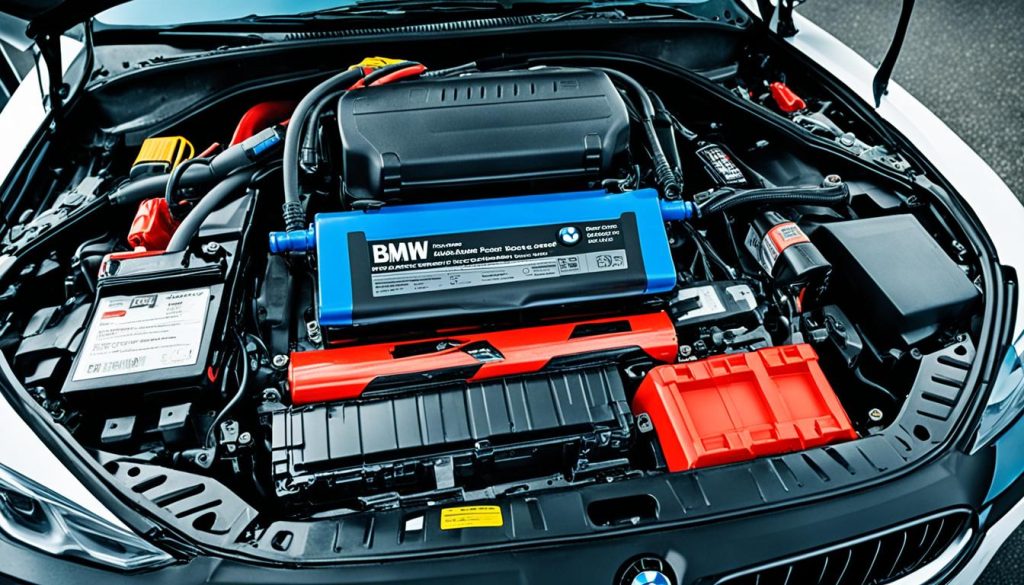
Safety Precautions to Prevent Damage or Injury
Safety takes precedence over speed when jump starting your BMW. Keep both vehicles, the disabled BMW and the donor car or jump starter, detached to stave off any potential electrical arcs. Gear up with protective glasses and gloves, and survey the battery for ominous signs of wear or damage, such as leaks or swelling. Fasten those cable connections securely, and keenly follow the recommended sequence for attaching and detaching jumper cables. Lastly, steer clear of any engine parts in motion to avert any injury or damage during the jump start process.
Remember, knowledge on how to jump start BMW battery is not just about the action itself, but the care in the preparation. With the right approach, tools, and safety measures, you’ll turn this urgent necessity into a well-handled routine, ensuring you’re ready whenever your BMW beckons for a battery revival.
bmw battery jump start: A Step-by-Step Tutorial
When you’re facing a dead BMW battery, the situation can demand immediate attention. Fortunately, knowing how to jump start a BMW battery can get you back on the road with minimal delay. Below you’ll find an easy tutorial that outlines the essential steps for a successful BMW battery jump start.

Firstly, ensure you’ve located your BMW’s battery or the designated jump start terminals often found in the engine bay. Once identified, here’s how you can jump start your BMW:
- Remove any protective covers from the battery or jump start terminals.
- Attach the red (positive) jumper cable to the positive terminal of the dead BMW battery. This is your live connection.
- Connect the other end of the red (positive) cable to the assisting vehicle’s positive battery terminal.
- Attach the black (negative) jumper cable to a grounded, unpainted metal part of your BMW’s frame or engine block.
- Finally, connect the other end of the black (negative) cable to the assisting vehicle’s negative battery terminal.
Next, start the engine of the assisting vehicle and let it idle for a few minutes. This allows the dead BMW battery to pick up some charge. You can now attempt to start your BMW. If the engine turns over, success! Let your car run for a while to build up the battery’s charge.
Here’s a table that breaks down the key points:
| Step | Action | Purpose |
|---|---|---|
| 1 | Locate Terminal and Remove Cover | Prepares for cable attachment |
| 2 | Attach Positive Cable (Red) | Establishes live connection |
| 3 | Attach Negative Cable (Black) | Completes circuit for safe charging |
| 4 | Start Assisting Vehicle & Idle | Provides power to charge dead battery |
| 5 | Attempt to Start BMW | Uses charge from jump to start car |
After successfully starting your BMW, don’t forget to remove the jumper cables in the reverse order of how you attached them. Be careful to ensure the clamps do not touch each other or any part of the engine to avoid sparking or potential short-circuiting.
Moving forward, keep an eye on your car’s performance and battery. If issues persist, consider reaching out to a professional for a BMW battery jump start service or a potential battery replacement.
Troubleshooting Common Issues During the Jump Start Process
Encountering a bmw dead battery can often lead to moments of uncertainty. Not to worry, we’ll guide you through some common hurdles and their solutions to get you back on track. From understanding when it’s time to seek professional bmw battery jump start near me to deciphering electrical hazards, we’ve got you covered.
Dealing with a Completely Discharged Battery
If you’re facing a BMW that won’t start due to a completely discharged battery, it’s important to maintain patience. Connect the jumper cables and wait at least 15 minutes. This grants your BMW’s dead battery enough time to absorb the initial charge required for starting the car. Still no luck? Double-check those clamp connections for solid contact, and ensure your jump starter has adequate charge.
Understanding When to Seek Professional BMW Battery Jump Start Service
There are times when DIY methods just won’t cut it, and it’s then you may need to seek out a bmw battery jump start service. Inability to successfully jump start your BMW after numerous attempts could signify the necessity for specialized diagnostics to identify the root cause, which could range from alternator issues to complex electrical faults.
Potential Electrical Hazards and How to Avoid Them
The process of jump-starting your BMW not only requires care to avoid a battery explosion but also to safeguard the vehicle’s intricate electronic network. Make sure to connect jumper cables to the engine bay’s designed terminals, and be extra cautious with battery acid and voltage disparities to avoid damage.
For those who are wondering, “Where can I find reliable bmw battery replacement or jump start options near me?” Remember, professionals utilize specific diagnostics tools to ensure your BMW’s battery health and electrical system function are thoroughly evaluated and correctly tended to. Keep an eye out for these signs of electrical issues:
- Difficulty in starting the engine
- Dim headlights or dashboard lights
- Unusual electrical glitches on the console
Finally, here’s a quick reference table for when it’s best to pursue professional services and when a simple in-person fix might suffice:
| Issue | DIY Jump Start | Seek Professional Help |
|---|---|---|
| BMW won’t start after jump | Re-check cable connections | If problem persists, seek help |
| Electrical malfunctions | Jump start with care | Professional electrical diagnostics |
| Battery frequently dying | Charge the battery | Consider a bmw battery replacement |
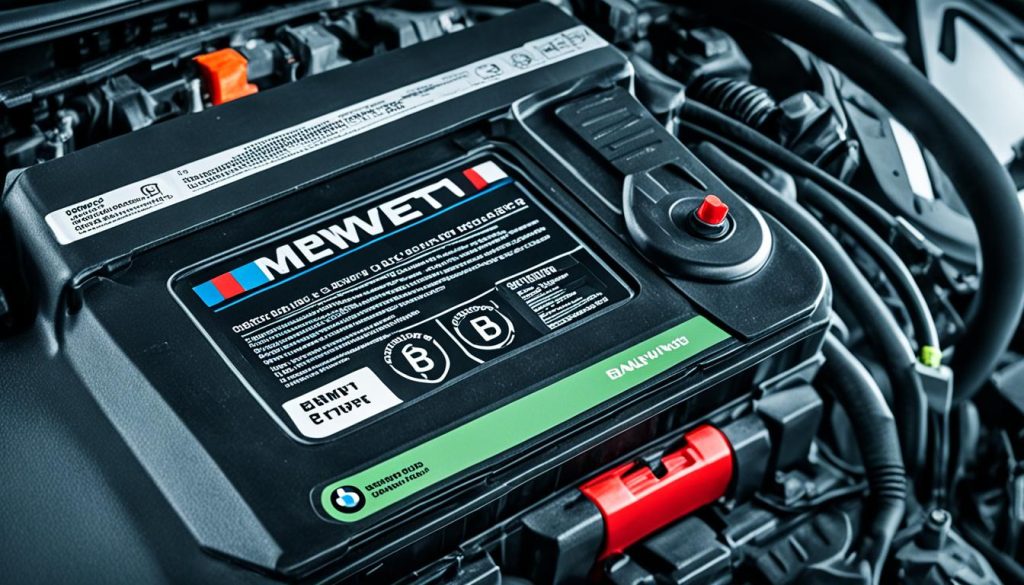
Post-Jump Start Tips for BMW Battery Maintenance
Once you’ve successfully breathed life into your BMW with a jump start, the next steps you take are pivotal for the longevity and health of your battery. The roadway ahead isn’t just about keeping the engine running; it’s about ensuring the battery is charged sufficiently, considering when it may be time for a replacement, and adopting practices for lasting battery upkeep. Ensuring these measures are taken seriously directly affects your vehicle’s reliability and your peace of mind on the road.
Ensuring Proper Charging After a Jump Start
After a jump start, your immediate goal is to recharge your battery. Driving your BMW uninterrupted for at least 30 minutes allows the alternator to replenish lost charge efficiently. Alternatively, connecting to a premium battery charger furthers the recharging process, ideally restoring it to full capacity. Yet, vigilance doesn’t end there; monitor your battery’s ability to retain charge. If you notice it struggling, it may be a sign that your vehicle requires the best battery for BMW to ensure non-stop performance on the go.
When to Consider a BMW Battery Replacement
Battery life in a BMW is finite, typically stretching up to four years before signs of wear may appear. Should your traversed paths extend beyond seven years, or you detect symptoms of aging such as slow cranks or persistent electrical issues, a BMW battery replacement might be on the horizon. Remember, equipping your vehicle with a top-tier battery not only enhances its endurance but also secures your confidence in its steadfast operation through every start and stop.
Long-Term Care for Your BMW’s Battery Health
Maintaining a BMW battery calls for commitment beyond the dealership. Simple, consistent attention—preventing total discharges, cleaning terminals, ensuring snug connections—can prevent the headache of unexpected failures. Also, consider the benefits of a trickle charger, particularly if your BMW is idle for prolonged periods, to preserve the battery’s charge. Maintain a close eye on your vehicle’s electrical system and seek professional aid at the first sign of trouble. By taking these proactive steps, you’ll cultivate optimal conditions for BMW battery maintenance, safeguarding your journeys ahead.
FAQ
How do you jump start a BMW with a dead battery?
To jump start a BMW with a dead battery, first locate the jump start terminals in the engine bay, often under a red plastic cover with a positive (+) symbol. Attach the red (positive) jumper cable to the BMW’s positive terminal and then the black (negative) jumper cable to a grounded metal part of the BMW. Connect the other end of the cables to a boosted vehicle or battery pack, start the booster vehicle or turn on the jump starter, and then try starting your BMW.
Where is the battery located in a BMW for jump starting?
The battery in a BMW may be located in the trunk, under the floor mat, or in the engine compartment, depending on your specific model. Regardless of the battery’s location, you should use the designed jump start terminals in the engine bay to connect the jumper cables for jump starting your BMW safely.
What tools do I need to jump start my BMW?
You will need a set of jumper cables with clearly marked red (positive) and black (negative) clamps and a functioning vehicle or 12V jump starter to provide the necessary power to jump start your dead BMW battery.
What safety precautions should I take when jump starting my BMW?
Always ensure that the two vehicles are not touching, wear protective gear such as safety goggles and gloves, check both batteries for damage or leaks, and make sure there’s no contact with moving engine parts. Connect and disconnect the jumper cables in the correct sequence, being careful to keep the cables and clamps from touching each other or any engine components to prevent sparking.
What should I do if my BMW battery does not charge after jump starting?
If your BMW battery does not charge after the initial jump start, keep the jumper cables connected for a longer period to allow the dead battery to charge. Check the connections to make sure the clamps are securely attached and that the jump box or assisting vehicle’s battery is fully charged. If the battery still does not charge, it may indicate a more serious issue, such as a failed alternator or the need for a battery replacement, and you should seek professional BMW battery jump start service.
After a successful jump start, how long should I drive my BMW to recharge the battery?
After a successful jump start, try to drive your BMW under normal conditions for at least 30 minutes to help recharge the battery. For a full recharge, consider using a quality battery charger for a few hours, especially if your battery is old or has been deeply discharged. Keep an eye on your battery’s performance in the following days to determine if it holds a charge well or if further action is needed.
When is it time to replace the battery in my BMW?
A BMW battery typically lasts about four years, but factors like usage, climate, battery type, and engine size can affect its lifespan. If your BMW is over seven years old and showing signs of battery wear, such as slow cranking or frequent need for jump starts, it might be time for a battery replacement. Remember to follow through with the battery registration procedure afterward.
How can I maintain my BMW’s battery health over the long term?
To maintain your BMW’s battery health, avoid letting the battery fully discharge, keep the terminals free of corrosion by cleaning them regularly and ensuring tight connections. For extended periods of non-use, using a trickle battery charger can help maintain the battery’s charge. Pay attention to your BMW’s electrical system and address any issues promptly with professional help to avoid battery failure.

